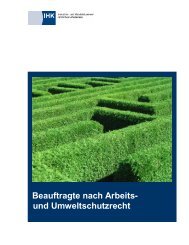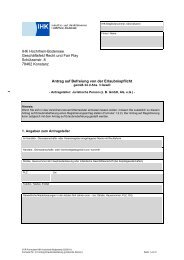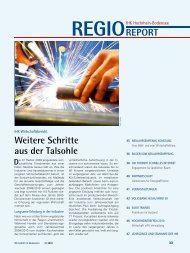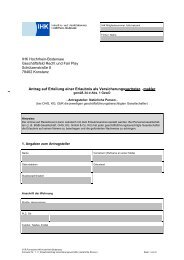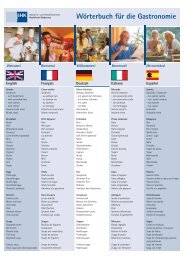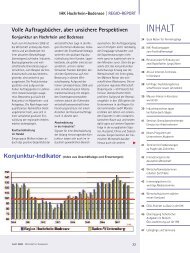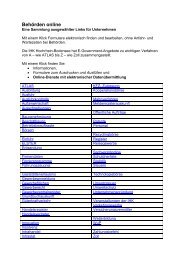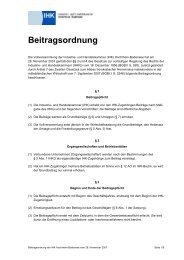REACH_One EINECs One SIEF_Final_clean
REACH_One EINECs One SIEF_Final_clean
REACH_One EINECs One SIEF_Final_clean
Create successful ePaper yourself
Turn your PDF publications into a flip-book with our unique Google optimized e-Paper software.
4. Conclusions<br />
The identity of the substance under <strong>REACH</strong> needs to be established on the basis of Article<br />
3(1) definition using the identifiers enumerated in section 2 of Annex VI <strong>REACH</strong>. These<br />
provisions are further interpreted in the Guidance on substance identification. This guidance<br />
refers to the EINECS reporting rules as a basis for identification and naming of substances.<br />
As in most cases, the EINECS reporting rules should be correctly reflected in EINECS, one<br />
EINECS entry should in those cases correspond to one substance under <strong>REACH</strong>. Also, a<br />
different impurity or hazard profile due to other reasons than those determining substance<br />
identity does not necessarily mean that identities of substances are different.<br />
In accordance with the <strong>REACH</strong> legal text and the Guidance on substance identification the<br />
EINECS number is an identifier for substance identification, but it does not alone determine<br />
substance identity, as other identifiers have to be taken into account. Therefore, one EINECS<br />
entry may correspond to two or more different substances. In those cases different <strong>SIEF</strong>s<br />
should be formed and joint submissions must be submitted for more precisely defined<br />
substances. Although this is more likely to occur for UVCB substances, this in principle<br />
applies also to ‘well-defined’ substances, as the substance definition in <strong>REACH</strong> does not<br />
distinguish between these two substance types. There can also be cases where several<br />
EINECS entries may correspond to one and the same substance for the purpose of <strong>REACH</strong>.<br />
In <strong>REACH</strong>, the EINECS listing is relevant mainly for determining the phase-in status of a<br />
substance (Article 3(20)). In cases where one EINECS entry corresponds to two or more<br />
different substances, all substances previously covered by that entry qualify as phase-in<br />
substances.<br />
In the process of data sharing, the first step of <strong>SIEF</strong> formation will be the establishment of the<br />
sameness of the substance within the <strong>SIEF</strong>. This is a process which takes place among the<br />
potential registrants, and there is at this stage no confirmation or rejection by ECHA or the<br />
Commission. In establishing the sameness, the potential registrants must respect the substance<br />
identity rules as established by <strong>REACH</strong>. These rules are further interpreted in the substance<br />
identification guidance, which should be used as the main interpretative tool. Companies<br />
should be aware that any decisions on sameness which are not in line with <strong>REACH</strong><br />
requirements may be challenged by the authorities.<br />
Such challenges may have serious consequences for the legality of registration dossiers. If<br />
EINECS entries are incorrectly split up and data sharing is refused on this basis after a request<br />
for data on the basis of Article 30(1) has been made, this results, in case it involves testing on<br />
vertebrate animals, in the inability of the registrant who refuses data sharing to register the<br />
substance. In any case, the refusal to provide studies on request should be penalised. On the<br />
other hand, incorrect registration dossiers covering several substances may be considered noncompliant<br />
and companies may have to prepare and submit new registration dossiers for each<br />
substance and pay the fee again. A possible way out in case of doubt is to interpret the<br />
substance identity narrowly, i.e. in case of doubt rather prepare several registration dossiers<br />
but nevertheless apply the data sharing obligations widely, i.e. to share data and apply readacross<br />
within the entire group of companies which pre-registered with this EINECS entry. In<br />
case of doubt, it is also recommended to contact ECHA in order to avoid problems after<br />
submission of the dossier.<br />
8



